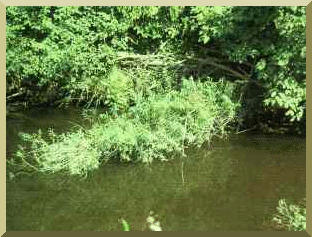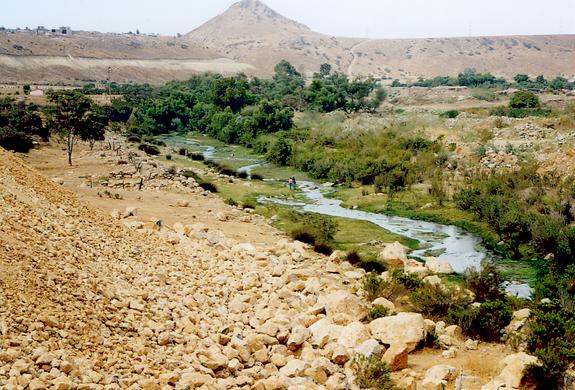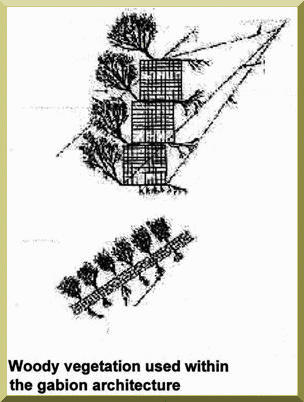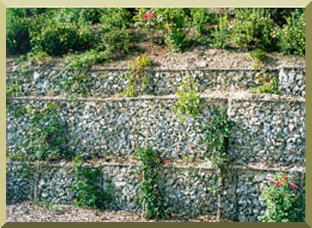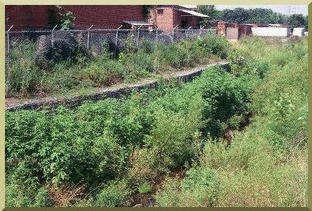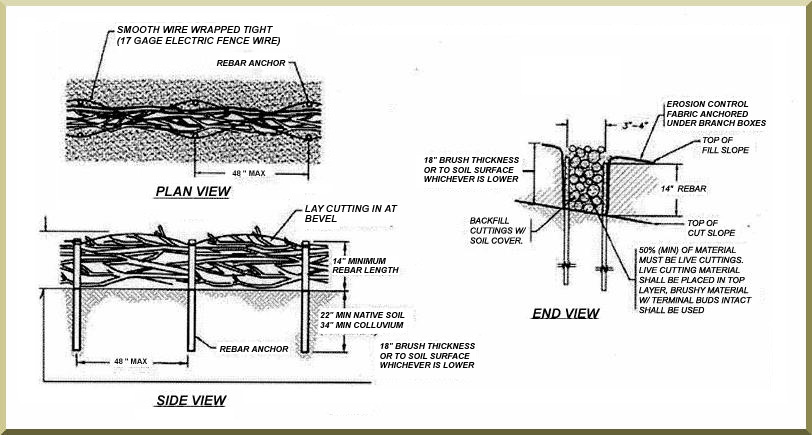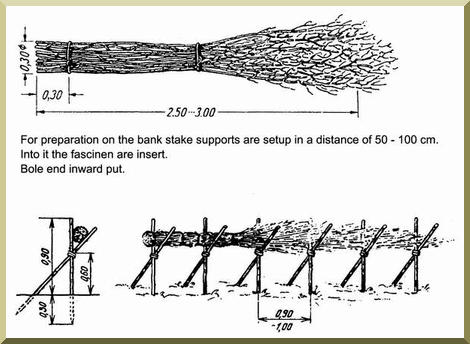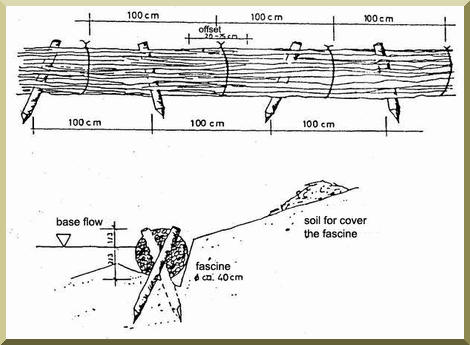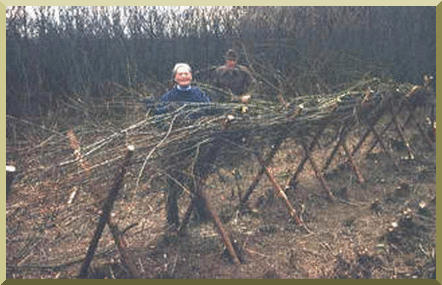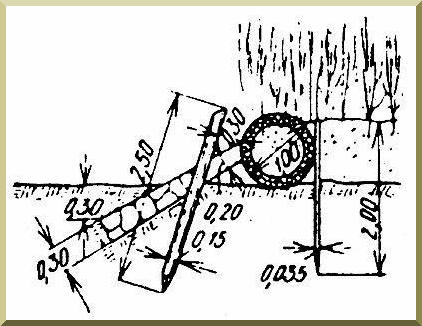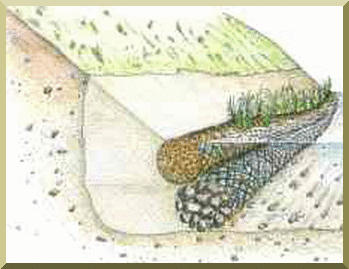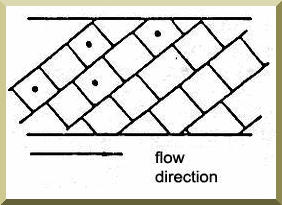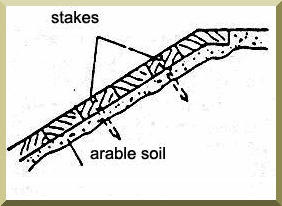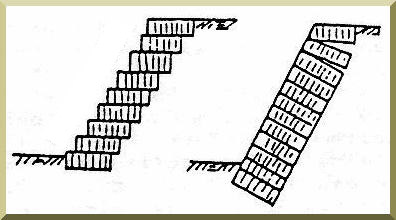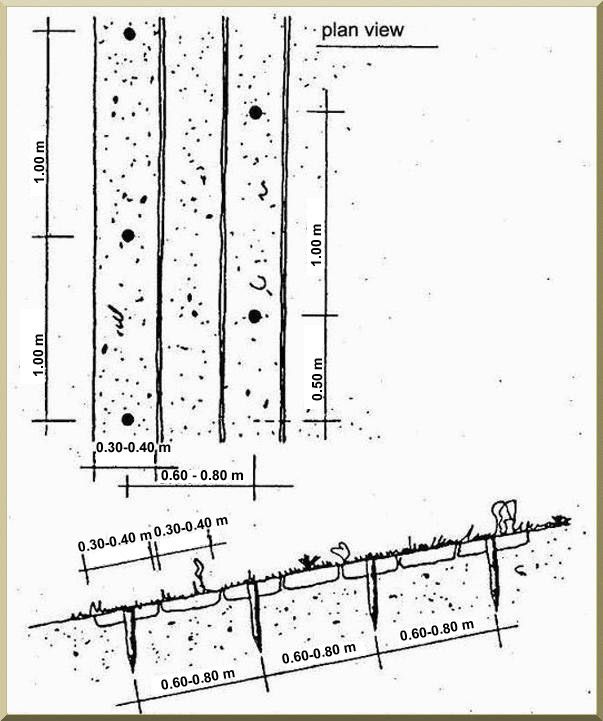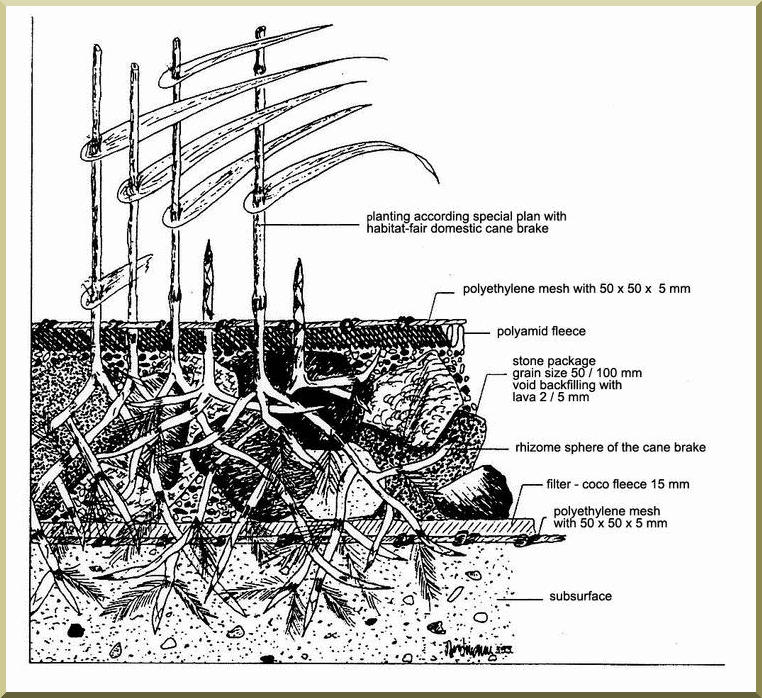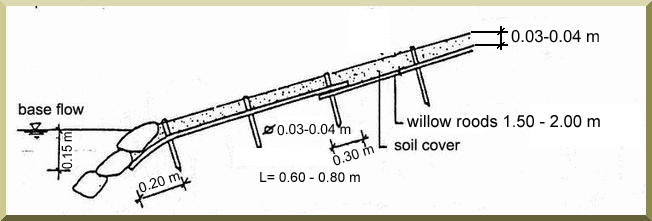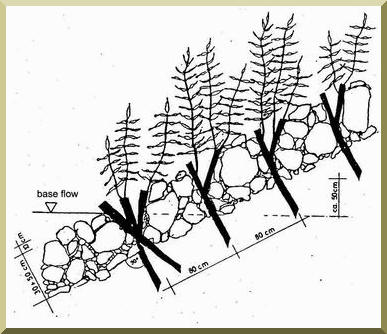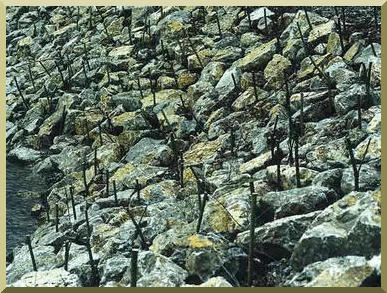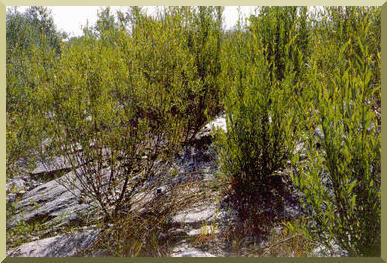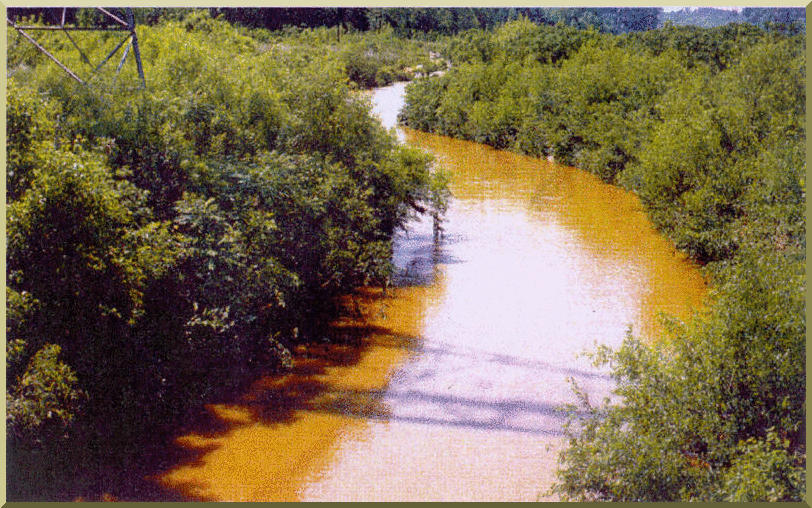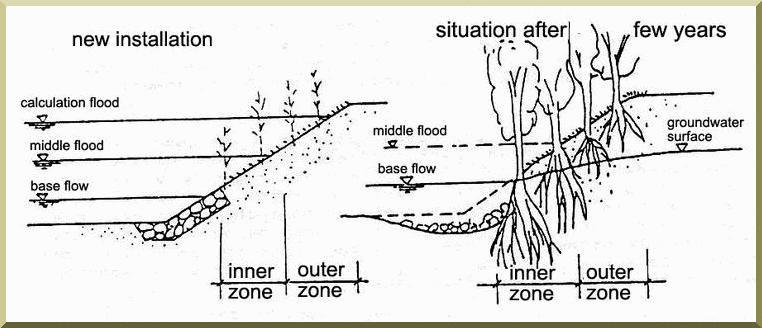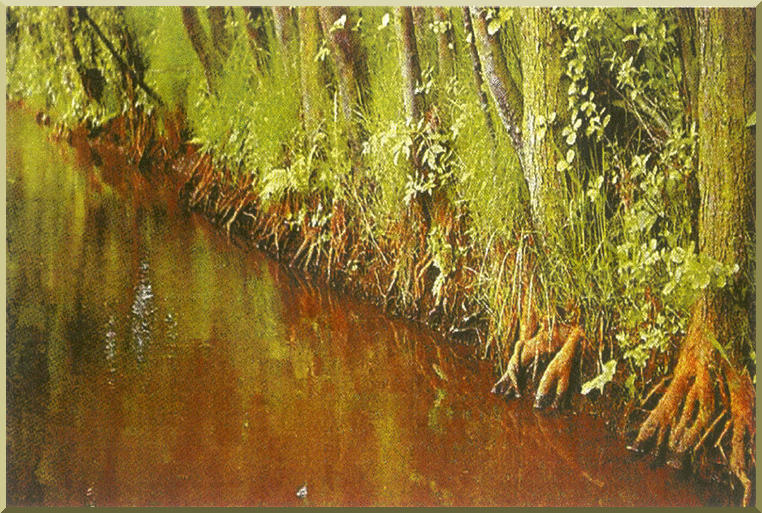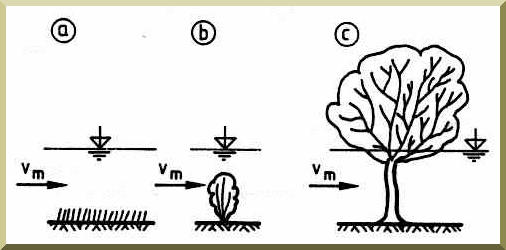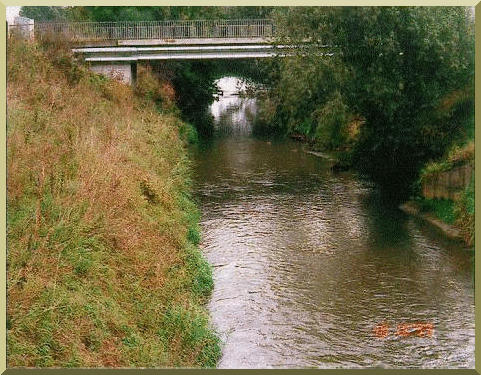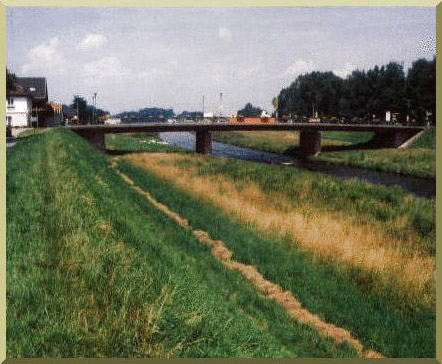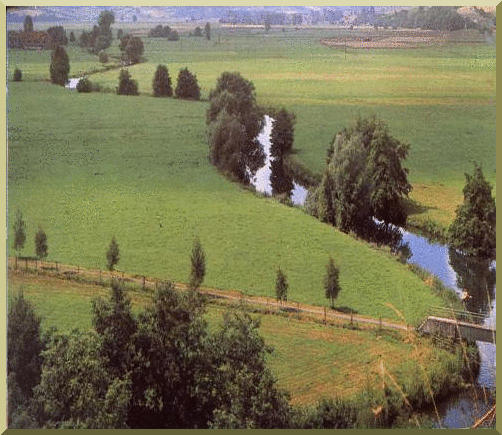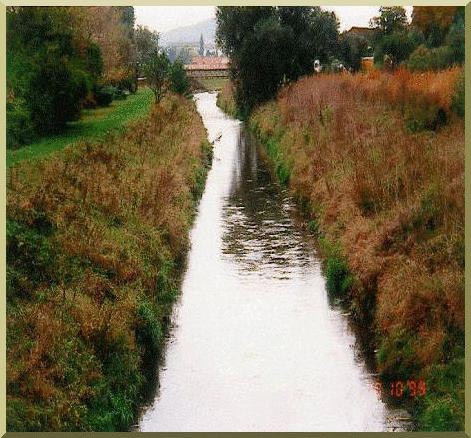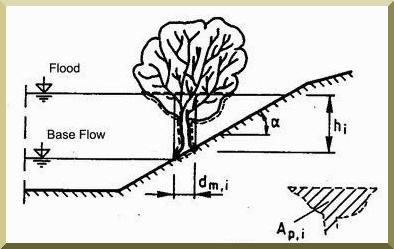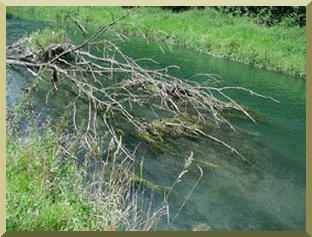|
The climax vegetation of Arroyo Alamar is of riparian corridor type.
It is dominated by deciduous trees which help reduce soil erosion and provide habitat for
other biological communities.
For many years, ecologists have referred to wide-leaf riparian species such as
Populus, Salix, Fraxinus, Platanus and others, as obligatory riparian species. These
and other terms such as facultative and pseudoriparian have been applied to diverse riparian species.
The U.S. Fish and Wildlife Service has adopted the following terms: "true riparian" for the obligatory riparian,
and "pseudoriparian" for the
facultative riparian (Reichenbacher, 1984). However, some riparian plants are greatly dependent
on the surface water and others on the subsurface water, being quite distinct from the phreatophytes (Smith et al., 1991).
In Zone I, the native vegetation has disappeared almost completely. It was formed by species of trees such as
willows (Salix spp.), poplars (Populus fremontii) and alder (Platanus racemosa).
These species have almost disappeared, except a few species of willows and a few individuals of poplars and alders along the river banks.
The climax vegetation of this arroyo would be an asociacion of willows and poplars.
The willows have a high degree of colonization in Zone I, where it can cover up to 100%.
This response of the willows may be due to the large anhropogenic disturbance and to the large deposits of organic matter and nitrate.
On the other hand, Zones II and III do not present large populations of these species.
At the present time, the vegetation of Arroyo Alamar in those areas
where there is good coverage of vegetation consists of three strata: trees, shrubs, and grasses.
In addition, there are also some aquatic and semiaquatic plants.
- Trees: Dominated first by a type of willow (Salix goodingii) and secondly, by Salix lasiolepis.
These are native species, with heights varying from 4 to 15 m, located along the water course and in contact with it.
- Shrubs: Dominated by two native shrubs, Baccharis glutinosa and Baccharis sarothroides,
growing principally outside of the main channel on top of accumulations of sand.
- Grasses: This strata varies with regard to native and introduced plants, the latter being favored due to the
altered environment.
- Aquatic and semiaquatic plants: Plants which are located in the main channel, under water, or in lagoons in the surroundings..
The most frequent species in aquatic and semiaquatic ecosystems are: Azzola filiculoides, Anemopsis
californica, Callitriche orcutti, Cyperus laevigatus, Cyperus lanceolatus, Eleocharis acicularis, Eleocharis
geniculata, Eleocharis palustris, Eleocharis parishii, Epilobium adenocaulis var. parishii, Juncus acutus,
Juncus bufonius, Juncus sphaerocarpus, Juncus rugulosus, Juncus xiphioides, Lemna trisulca, Lemna valdiviana,
Lemna gibba, Lilae subulata, Marsilia fournieri, Mimulus gutatus, Nasturtium officinale, Ophioglossum
californicum, Pilularia americana, Ranunuculus cymbaralia, Sagittaria cuneata, Sagittaria greggi, Scirpus
acutus, Typha dominguensis, Typha latifolia, Zannichella palustris; besides the introduced reeds
Arundo donax and Phragmites australis.
The species Nicotiana glauca) and Salsola kali var. tenuifolia
establish themselves quite readily in agricultural and urban areas. Other species occupy areas that have been disturbed; among these are
Baccharis sarothroides, Baccharis glutinosa, Erodium cicutarium, Brassica campestris, Haplopappus
venetus, Taraxacum officinale, Xanthium strumarium, Ambrosia psilostachya,
Cirsium vulgare, Sonchus oleraceus and Datura discolor.
|
